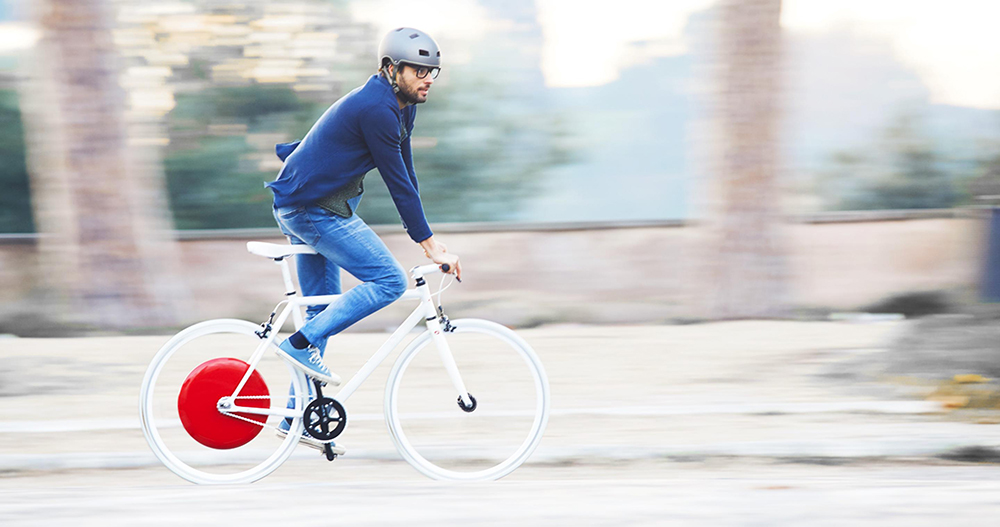Lizzie commutes every day from Oakland to Golden Gate Park in San Francisco where she works as a botanist. It takes her about 1 1/2 hours to drive 14 miles each way. She arrives at the office stressed because of the traffic and feeling robbed of time she would rather spend with her family. She’s desperately looking for a way to get that time back.
Unfortunately, Lizzie is far from alone. We are currently seeing the biggest wave of urbanization in human history. By 2050, nearly two-thirds of the world’s population will live in cities. There will be significant increases in congestion, pollution, and greenhouse gas emissions. Demand for urban mobility will skyrocket more than 250%, requiring more road capacity simply to maintain today’s bad levels of traffic. As a result, there’s immense pressure to provide more efficient solutions for today’s level of traffic and infrastructure stressors in urban environments.
Many in the transportation industry are looking to autonomous vehicles as a solution. However, the promise of autonomous vehicles as an all-encompassing solution falls short. On average, 1.55 people ride in a private car today. It’s very unlikely that a self-driving sedan will be full 100% of the time. Recent surveys show that even with a steep discount, only 52% of riders will be willing to share a self-driving car. Unless self-driving cars hit full capacity 100% of the time, we will still have excess vehicle usage, time delays, and congestion.
In order to move people more effectively through a city, we need a range of vehicles, from autonomous buses and vans, like 15-seater vehicles, all the way to one- and two-person vehicles. For dense urban areas, personal vehicles are more efficient than cars and public transportation.
Bicycles are an obvious solution for personal transportation that would reduce congestion. The bicycle was invented about 150 years ago. In that same time frame, the average city grew about 20 times in land area, while the bike has essential stayed the same. Most people are willing to spend around twenty-five minutes on a bike for a one-way trip. Add hills to ever-expanding cityscapes and many trips on a bike are out of reach for most people.
Electric bikes promise personal mobility while providing the power people need to travel throughout our sprawling cities. However, electric bikes are expensive, provide limited choice for consumers, and deliver a choppy riding experience. They also have external batteries, wires, and buttons, which deteriorate from the experience and the aesthetics of the bicycle. This makes electric bikes unappealing to many consumers.

Our mission at Superpedestrian, the company I founded after co-inventing the Copenhagen Wheel out of MIT, is to develop new vehicles for personal transportation that offer revolutionary alternatives to the car for people of all ages and abilities. The advancements Superpedestrian has made in sensing, controls, and actuation can now seamlessly integrate the power and mechanics of a vehicle with the dynamics of the human body. These human-enhancing technologies, which amplify the human body’s movements, made it possible for us to create the first commercially used comfortable and compelling small-scale vehicles. These vehicles are lightweight, compact, and feel great to ride. They can respond to shifts in your location within the vehicle and actively absorb shocks and the impact of acceleration and braking. They move in synchrony with your body to create a sense of comfort and better handling, resulting in safer rides. Their technology connects with users wirelessly, allowing for a clean aesthetic. They are infinitely adaptable, with the ability to attach to nearly any bicycle – simply by replacing its rear wheel. Ultimately, they make it possible to replace your car with your bike.
Beyond the innovations of the technology itself, we need to think deeply about its distribution to ensure that it’s widely accessible so it has the potential to make a deep societal impact. Most electric bikes are sold at up to 5X their original manufacturing cost, putting them out of reach for many consumers. The 5X increase also limits technological innovation, which means consumers are paying more for less sophisticated tech. To encourage innovation and drive accessibility, we’ve developed a distribution model that disrupts the traditional value chain for electric bikes and enables us to deliver superior technology at a fraction of the price of premium e-bikes. Consumers can purchase the Copenhagen Wheel on the web, at bike shops across the country, and through their favorite bike brands, and put it on the bike they love most.
Today, Lizzie rides her classic mountain bike with the Copenhagen Wheel to work. Now, instead of spending 1 1/2 hours in traffic, she has not only reduced her time commuting by 50%, she can enjoy breakfast with her children and gain the health and wellness benefits that come along with cycling to work daily.
© CoMotion LA │ Powering a Sustainable Multimodal Future for All
Sign up for CoMotion NEWS, our must-read weekly newsletter that contains the most critical mobility news of the week, updates about: CoMotion events, the Fast Forward Podcast and more!